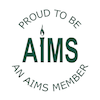Book review by Natalie Stringer The AIMS Guide To Giving Birth To your Baby by Deborah Neiger is available from the AIMS website for £8. The AIMS Guide to Giving Birth to you Baby is a fantastic resource for expectant parents who have maybe not yet explored antenatal education. The contents pages towards the front…
Natalie Stringer
Nurturing Birth Book Review: The AIMS Guide to Resolution After Birth
Book review by Natalie Stringer The AIMS Guide to Resolution After Birth, by Shane Ridley, is available from the AIMS shop as a printed book or on Kindle, for £8: https://www.aims.org.uk/shop “An absolute must-have resource.” This book from the Association for Improvements in the Maternity Services (AIMS) is an absolute must have resource guide. It…






